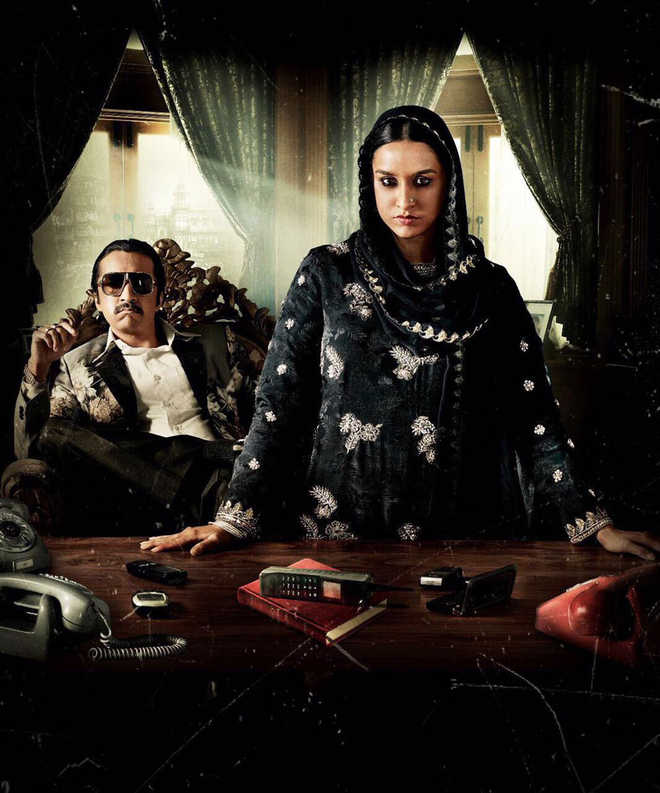Shoma A. Chatterji
One cannot accuse Bollywood of creating ideas for films that define a genre that does not exist in theory but is rampant in practice. Biopics in Bollywood have been ruling the roost for some time now. The biopics on positive and strong men and women such as Paan Singh Tomar, Mary Kom and Milkha Singh are counterpointed by a long chain of films on those who have left a scar on the map of India. Presently, we are being flooded with biopics on mafia dons. Produced by big banners, these are being directed by big directors with leading actors fleshing out these negative roles. Among these is Ashim Ahluwalia’s Daddy, which is based on the life of Arun Gawli, the mafia gang leader from Mumbai who later turned to politics. Arjun Rampal is playing the lead in Daddy. Throughout the late 1980s and 1990s, Gawli’s gang was involved in a power struggle with Dawood Ibrahim’s D-company. Gawli is also the founder of the Akhil Bharatiya Sena, a Maharashtra-based political party.
Shraddha Kapoor, who has so far played the girl-next-door, turns a new page in the title role of Haseena Parkar. Popularly known as “Aapa”— a name that sent shivers in Mumbai’s Nagpada area — Haseena Parkar is a true story based on the life and times of the sister of Dawood Ibrahim, India’s most wanted man. The film charts her journey from a young girl to a mother of four to the godmother of Nagpada across four decades in Mumbai’s notorious underworld. Shraddha Kapoor is said to have worked very hard to bring alive the harsh, sharp and fiercely aggressive persona of Haseena on screen. Since she had to age from 17 to 45, Kapoor had to gain 17 kg to look older and fuller. The film has been directed by Apoorva Lakhia and produced by Nahid Khan.
The latest to join the ranks is Bengali film Dhananjoy, which files a reopening of the case of Dhananjoy Chatterjee who raped and murdered Hetal Parekh, a schoolgirl, in March 1990 and served a sentence for 14 years before he was hanged for the crime in August 2004. The film, awarded an A certificate, projects the argument that Dhananjoy was, perhaps, wrongly sentenced and hanged for a killing that was probably an honour killing.
Bollywood’s love for the negative hero goes back to Deewar (1975), which was directed by Yash Chopra. The film was a fictionalised account of the life of Haji Mastan, an Indian gangster, film financer and real-estate businessman. He is said to be the first-ever celebrity gangster of Bombay. Deewar became a cult film and for Bollywood, it became a benchmark for sure success of films based on the lives of people in crime. The fictionalised version by Amitabh Bachchan was distanced from the real-life Haji Mastan, who was a suave, sophisticated fashionista who moved around in luxury cars and was invited to grace parties thrown by Bollywood. He was a swashbuckling adventurer, who lived his life as if there was no tomorrow. Yet, people loved Vijay because he was martyred for a “good” cause — the cause of establishing the integrity of his brother, a police officer.
Many films like Bandit Queen followed. These were either critically acclaimed or boxoffice hits. But never before has such negative personalities been celebrated with a celluloid tribute.
In these films, the ‘fantasy’ part, dotted with song and dance and item numbers, romance and beautifully orchestrated violence is designed to iconise the mafia protagonist of the film so one is never sure where truth ends and fiction begins. So these films raise questions about the authentic narration of their life stories.
Often the lead characters are invested with a lot of romanticism with no or little approximation to their real lives. They are all biased forthe protagonist and rationalise their anti-social deeds and crimes with back stories of a childhood destroyed by birth or circumstance or both. At the same time, they reveal the underbelly of the mafia world we know nothing about. But if these films are more fiction than real, can one really depend on its depiction of the mafia world even as information and education?
Unlock Exclusive Insights with The Tribune Premium
Take your experience further with Premium access.
Thought-provoking Opinions, Expert Analysis, In-depth Insights and other Member Only Benefits
Already a Member? Sign In Now










